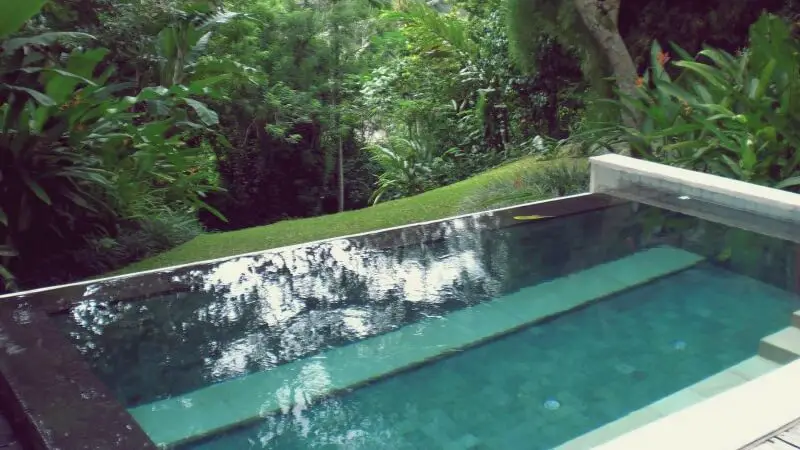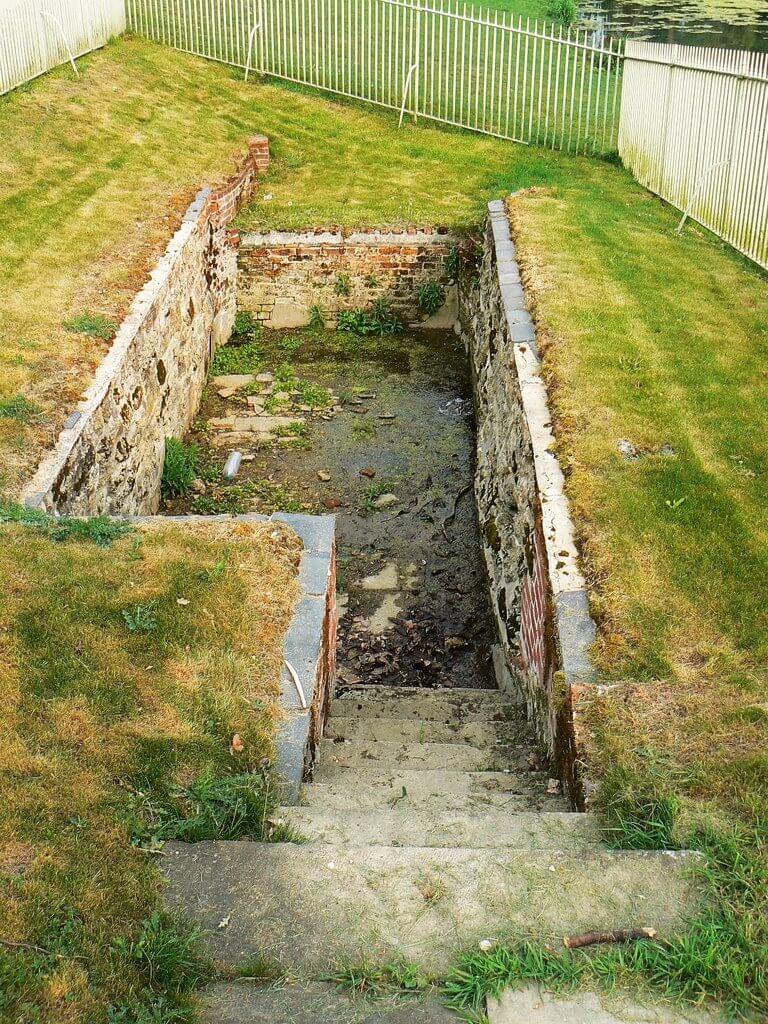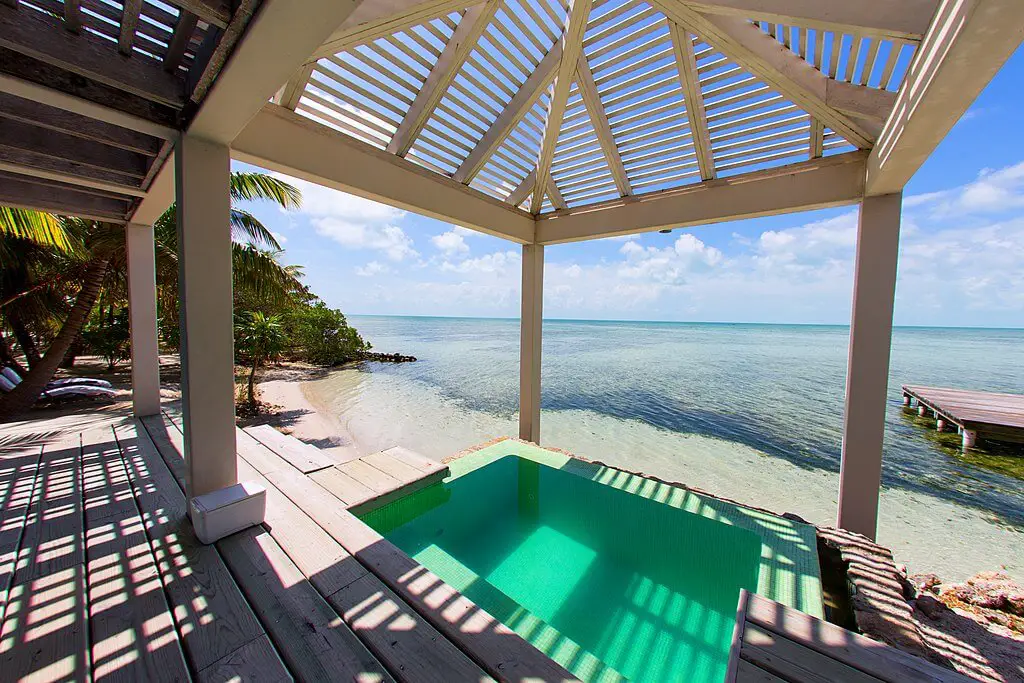A plunge pool, also known as a dipping pool, is a compact, small-sized pool designed primarily for relaxation and cooling off rather than swimming or exercising. These pools have gained popularity among homeowners with limited backyard space or those seeking a more cost-effective and low-maintenance alternative to traditional swimming pools.
Typically deeper than your average pool, plunge pools offer an excellent space-saving solution that allows users to enjoy the refreshing benefits of a pool while conserving valuable outdoor real estate. They come in various depths and sizes, and can even be used as a “normal pool temperature hot tub” for soaking and unwinding.
In this article, readers will explore the various aspects and benefits of plunge pools, including their aesthetic appeal, diverse functionality, and suitability for different climates. Additionally, the article will discuss cost considerations and installation requirements, helping homeowners make informed decisions about whether a plunge pool is the right fit for their needs.
What Is a Plunge Pool?
A plunge pool is a small, typically deep, pool designed primarily for wading, lounging, and cooling off rather than swimming or engaging in other activities. These compact pools are an ideal option when space in your yard is limited, offering the benefits of a traditional pool in a much smaller area.
Due to their smaller size, plunge pools can double as hot tubs during the winter and cooling pools during the summer, as long as they are connected to the appropriate pool machinery. This flexibility makes them an attractive choice for people living in very hot climates or those who enjoy spending time on the pool steps while sipping a cold drink.
Although not designed for swimming, plunge pools are versatile in terms of depth and size, providing a space for relaxation, low-impact water exercise, and rehabilitation.
They are usually larger than a hot tub but smaller than a conventional pool. This compact design is perfect for those seeking the benefits of a pool without the large footprint, making it an appealing solution for people with smaller yards or budget constraints.
Benefits of Plunge Pools

Health and Wellness
Plunge pools offer numerous health benefits, making them an excellent choice for promoting relaxation and well-being. These small pools provide a refreshing space for water-based activities like low-impact exercise, which can help reduce joint pressure and alleviate muscle tension.
Another advantage is the therapeutic aspect, as the option to install jets can transform your plunge pool into a massage pool. This feature is perfect for relieving stress and creating a rejuvenating personal retreat.
Space Efficiency
Due to their compact size, plunge pools are an ideal choice for homeowners with limited outdoor spaces. They require a smaller installation area compared to traditional swimming pools, making them adaptable to different backyard layouts and sizes. This feature allows for easy incorporation into a variety of landscaping designs without occupying too much space.
Energy and Cost Savings
Plunge pools are generally more affordable to install, maintain, and operate compared to full-sized pools. Their smaller size equates to less construction material and a faster installation process, ultimately lowering the overall cost.
Additionally, these compact pools offer energy savings, as they require less time and power to heat compared to larger pools. The reduced water volume also means that fewer chemicals are needed for maintenance, lowering the long-term cost of ownership.
Types of Plunge Pools

In-Ground
In-ground plunge pools are a popular choice for homeowners looking for a space-saving alternative to traditional swimming pools.
These small, deep pools are typically installed in the ground and offer a great way to cool off during hot summer days while consuming less water and space than larger swimming pools.
Their in-ground installation also provides a seamless and low-profile appearance in your backyard. In-ground plunge pools have the same filters and pumps as their larger counterparts, ensuring efficient water circulation and maintenance.
Above-Ground
Above-ground plunge pools are also available for those seeking a more versatile and portable option.
These pools come in various materials such as concrete and fiberglass resin, and can be an excellent choice for individuals with limited backyard space or those who wish to avoid extensive excavation work.
Furthermore, above-ground models can be easier and less expensive to install than their in-ground counterparts.
Natural
Natural plunge pools offer a more rustic and eco-friendly approach to enjoying a refreshing dip in your backyard. These pools are designed to mimic natural bodies of water, incorporating elements such as boulders, pebbles, and aquatic plants.
The main emphasis in a natural plunge pool is to create a harmonious balance with the surrounding landscape and provide a more organic experience for the user. Natural plunge pools often utilize eco-friendly filtration systems to maintain water quality without the need for harsh chemicals.
Hydrotherapy
Hydrotherapy plunge pools offer therapeutic benefits through the use of jets, bubbles, and temperature controls. The design of these pools focuses on providing relief for various physical ailments, such as muscle soreness, joint pain, and stress.
The versatility of hydrotherapy plunge pools cannot be overstated, as they can be used for aqua-aerobics or water rehabilitation exercises. These specialized plunge pools can also double as hot tubs during cold seasons, offering year-round relaxation and enjoyment.
Design Considerations
Size and Shape
When planning a plunge pool, it’s essential to consider the size and shape that will best serve your needs. Plunge pools are generally smaller than traditional pools, typically ranging from 8 to 12 feet in length and width, with a uniform depth of 5 to 7 feet.
They come in various shapes, but rectangular designs are most common due to their efficient use of space. However, some homeowners opt for round models, even though they may not optimize the available area as effectively. Selecting the right size and shape depends on the available space and desired aesthetics.
Material Choices
Next, consider the materials for your plunge pool. Common materials include concrete, fiberglass, and vinyl lining.
- Concrete is a popular choice for a customized and long-lasting pool, allowing for flexibility in design and depth.
- Fiberglass pools are pre-fabricated and faster to install, offering a smooth finish and requiring less maintenance in the long run.
- Vinyl-lined pools are the most affordable option but may need a liner replacement every 7-10 years.
Surrounding Area
Creating a functional and aesthetically pleasing surrounding area is essential for your plunge pool experience. Consider incorporating decking, patio, or garden landscaping elements to make your plunge pool a focal point of your outdoor space.
For safety and accessibility, think about adding non-slip materials and properly designed steps or ladders. Additionally, incorporating features such as built-in seating, water features, or complementary lighting can enhance the ambiance and overall enjoyment of your plunge pool.
Installation and Maintenance

Steps for Installation
Installing a plunge pool can be broken down into several steps. First, you must decide on the pool’s location, size, and type, taking into consideration your available space, budget, and personal preferences.
Plunge pools can be installed in-ground or above ground, with options for concrete or fiberglass resin construction.
Once you’ve made your choices, the next step involves obtaining any necessary permits and working with an experienced contractor to prepare the site. This may include excavating the area, leveling the ground, and installing any necessary plumbing and electrical systems.
After site preparation, the pool’s structure is built, either by pouring concrete or placing a pre-fabricated fiberglass shell. The pool’s interior is then finished (e.g., with tiles, plaster, or a vinyl liner) and the surrounding area is landscaped with decking or paving materials.
Handy homeowners can DIY the pool installation and landscaping to save on labor costs. However, most homeowners will hire a professional pool installation service instead.
Ongoing Maintenance
Keeping a plunge pool clean and well-maintained is essential for its longevity and your comfort. Here are some important tasks to perform on a regular basis:
- Skimming the water surface to remove debris.
- Vacuuming the pool floor and walls to remove dirt and algae.
- Maintaining water chemistry by testing and adjusting pH, alkalinity, and sanitizer levels.
- Checking and cleaning the filtration system, ensuring it operates efficiently.
- Inspecting pool equipment for signs of wear, leakage, or damage and addressing issues promptly.
Plunge pools, being smaller than traditional swimming pools, generally require less maintenance, saving you time and money. However, it is still essential to keep a close eye on water quality, filtration, and cleanliness.
Frequently Asked Questions
Are plunge pools heated?
Yes, plunge pools can be heated. The water temperature of a heated plunge pool can go up to 104°F. However, heating a plunge pool will add to the overall cost.
How much do plunge pools cost?
Plunge pool costs can vary depending on factors such as size, material, and installation methods. On average, you can expect to spend between $15,000 and $35,000 for a plunge pool installation. However, this price can increase depending on the level of customization and additional features desired.
For example, adding features like waterfalls, heaters, and underwater exercise equipment can increase the overall cost. It’s important to consult with a pool installation professional to get a personalized quote based on your specific needs and preferences. More information on plunge pool costs can be found here.
How deep is a plunge pool?
Plunge pools are typically deeper than traditional swimming pools to accommodate wading and lounging. A common depth for a plunge pool is around 6 feet, though some can be as shallow as 4 feet and others can be as deep as 8 feet.
The specific depth of your plunge pool can be customized depending on your preferences, but it is important to consider safety factors and how the pool depth will be used by all members of the household.
What are some downsides to plunge pools?
There are some inherent downsides to plunge pools related to its small size.
- Not many people can use it at the same time before it gets crowded.
- It is not suitable for people who want to swim laps or do exercise in it.
- Plunge pools can pose a safety risk for kids. They may be tempted to dive into it, not realizing that a plunge pool is often very shallow.
- Plunge pools do not add significant value to your home, unlike a larger swimming pool.
- If you are one to entertain guests, a plunge pool may not impress them as much as a larger swimming pool.
These are just some of the downsides you should consider before installing a plunge pool.
Are plunge pools worth it?
Suppose you can afford to install a plunge pool, and after weighing it against the benefits that a plunge pool provides, should you still take the plunge? As a reminder, plunge pools offer several benefits, including:
- Less Maintenance: Smaller size means fewer chemicals and easier cleaning.
- Lower Operating Costs: Requires less water and energy for filtration and heating.
- Therapeutic Benefits: Ideal for hydrotherapy and low-impact exercise.
- Space Efficiency: Perfect for smaller yards or urban settings.
Ultimately, the decision to invest in a plunge pool depends on your individual needs and priorities. If you value the benefits of a compact pool for relaxation, therapy, or aesthetic purposes, a plunge pool may be a worthwhile addition to your home. More information on the pros and cons of plunge pools can be found here.
Photo Credits: Cayo Espanto Private Island, CC BY-SA 4.0, Matt @ PEK from Taipei, Taiwan, CC BY-SA 2.0, Matt@CKG, CC BY-NC-SA 2.0, Brian Robert Marshall CC BY-SA 2.0

